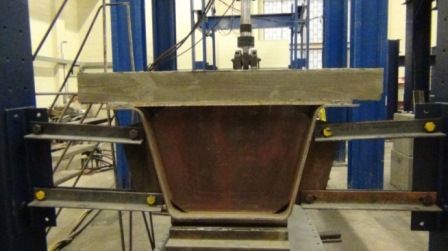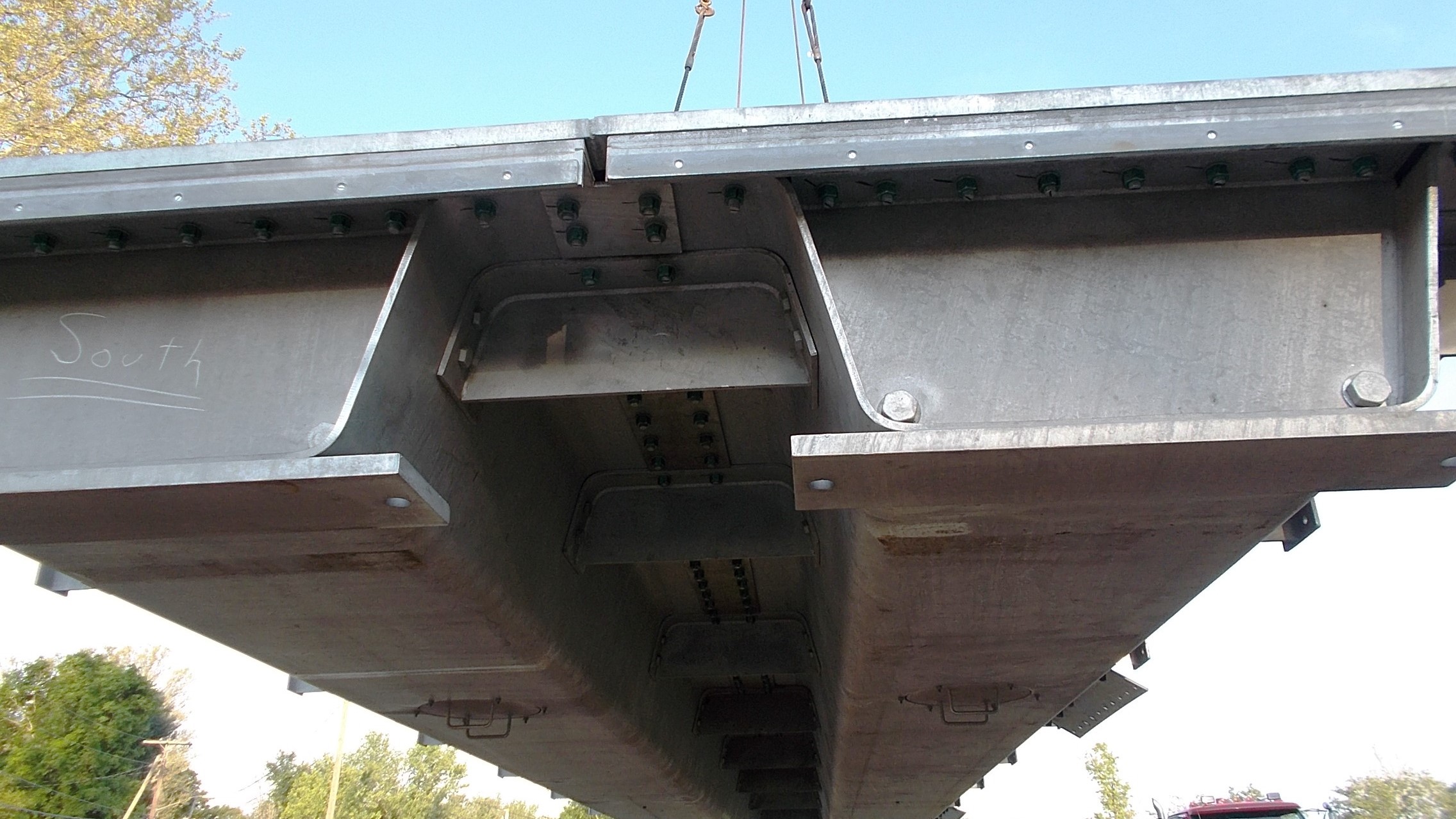
Press Brake Tub Girders Accelerate U.S Infrastructure Rebuilding
Excerpt from The Fabricator
Forming process is a viable, efficient, economical solution to replacing aging bridges
It’s no secret that America’s infrastructure is due for a replacement. When the I-35 Mississippi River Bridge in Minneapolis collapsed in 2007, killing 13 people, the whole country took notice.
Two years later the American Recovery and Reinvestment Act included nearly $50 billion in funding for transportation infrastructure to support needed repairs and long-term transformative investments in communities across every state. Infrastructure repair and replacement is one goal that both political parties seem to agree on.
According to the Bureau of Transportation Statistics, there were more than 617, 000 bridges in 2019 in the U.S. and only 279,582—44%—are in good condition. More than 56,000—9.1%—of the nation’s bridges were categorized as structurally deficient in 2016.*
Time is of the essence. Almost four in 10 are 50 years or older, according to the American Society of Civil Engineers (ASCE) 2017 statement.
Chief Economist Dr. Alison Premo Black of the American Road & Transportation Builders Association (ARTBA) said, “At the current pace, it would take more than 50 years to repair America’s structurally deficient bridges.”
Press Brake Forming to the Rescue of Short-span Bridges
“The greatest need is in the short-span category of 140 ft. or less,” said Dr. Karl Barth, West Virginia University, Dept. of Civil and Environmental Engineering, adding that nearly half of structurally deficient bridges fall in the short-span category. A short-span bridge is defined as a bridge that is the distance between two intermediate supports shorter than 140 ft.
Seeking new, better, faster, cheaper ways of replacing bridges to help address the U.S. infrastructure crisis, IDOT issued a challenge for the development of a viable, economical solution to replacing the aging bridge infrastructure for short-span structures of up to 80 ft.
Barth headed the industry task group responsible for developing the technology.
Design Methodology Replaces Welding With Press Brake Bending
We were tasked by the federal highway department to develop systems for the acceleration of short-span bridge construction that would be economical,” Barth said. “The goal was to use standard, commonly available plate widths of 84 in., 96 in., and so forth.” The process also had to be compatible with mass production to avoid the costs of customization.
What is the system? It’s simply a straightforward steel tub girder with a precast concrete deck—with a twist.
“We wound up with a standard steel trapezoidal box but we fabricated it from press brake bending rather than conventional welding,” Barth said. “Features for the short-span can be produced in about 30 to 40 minutes using press brake forming.”
The girder type is the common U.S. trapezoidal girder slope ratio of 1-4 on the edges, with a 5T bend radius, Barth explained. “We figured we didn’t need much compression on the flange. We held them at 6 in. wide. We just needed enough to hold the studs until we got the deck on there.”

Press-brake-formed tub girder consists of modular galvanized shallow trapezoidal boxes fabricated from cold-bent structural steel plate.
The press brake-formed plate tub girder (PBFTG) is galvanized to extend life and is then topped with a concrete deck. “Our standard is to hot-dip galvanize them inside and out to provide 60-plus years of protection.
“It’s not hugely innovative. But it’s made in a means that can be economical in the short-span market. Bigger, more complicated bridge geometries with closed sectioned tubs have a very ideal geometry for welding applications. The problem is that you can’t scale that technology down economically to the 40-, 60-, 80-ft. short-span bridge market,” Barth concluded.
The module can be preassembled or field-assembled. Modules are joined using ultrahigh-performance concrete (UHPC) longitudinal closure pours.
What are Press Brake Tub Girders?
Press-brake-formed tub girder (PBTG) is a new technology for short span bridge applications. It consists of modular galvanized shallow trapezoidal boxes fabricated from cold-bent structural steel plate (watch fabrication video). A concrete deck is recommended to be precast on the girder and the modular unit can be shipped by truck to the bridge site.

The system utilizes standard plate widths (based on availability) and is optimized to achieve maximum structural capacity, with most of the steel in the bottom flange and increased torsional stiffness. It is a closed system, since the girder is closed at the bottom. It is versatile for multiple-deck options.
The system utilizes Accelerated Bridge Construction practices, since it:
- Can be installed in one or two days
- Is modular, allowing the use of a precast deck
- Is cost-effective―as much as 1/3 less than a standard concrete girder structure
- Is simple to fabricate, requiring very little welding.

The Short Span Steel Bridge Alliance has developed standardized plans using standard plate sizes (60”, 72” 84”, 96”, 108”, 120”). The designs were developed to achieve maximum structural capacity and are available to use in the free-to-use, web-based design tool eSPAN140.
The press-brake-formed tub girder system is open source.
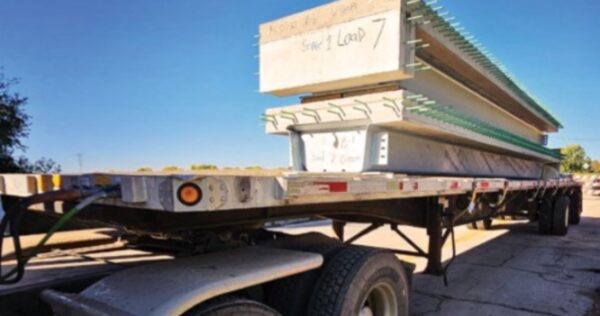 Press Brake & Folded Plate
Press Brake & Folded Plate
Whiteside County (IL) Uses FHWA Funds for Accelerated Steel Bridge Project
Russ Renner, a Whiteside County Engineer, saved up to 12 weeks of lane closures by installing a steel bridge for the crossing.
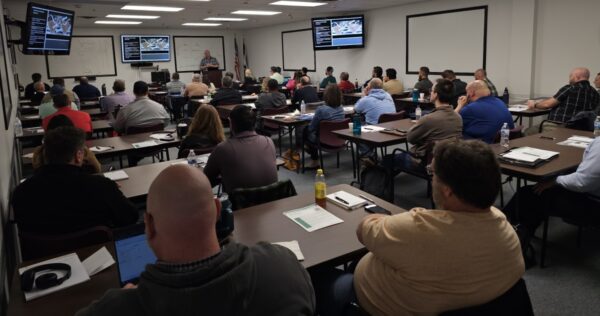 Innovation
Innovation
SSSBA and WV LTAP Team Up for Steel Bridge Workshop
The SSSBA and WVDOH collaborated on a bridge workshop to discuss the design of steel bridges with cost-effective, time-saving options for states and counties.
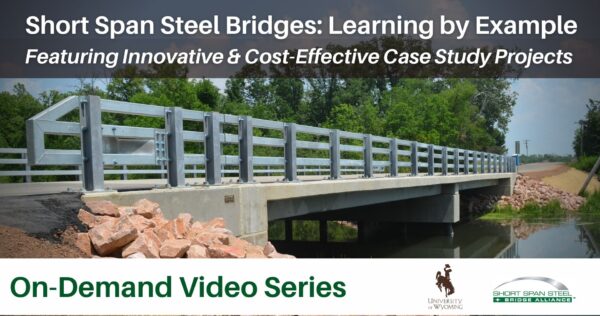 Buried Bridge
Buried Bridge
On-Demand Steel Bridge Video Series: Learning By Example
A distinguished panel of 8 industry experts to present case studies that offer innovative and cost-effective examples of steel bridge replacement projects.
 Short Span Steel Bridges
Short Span Steel Bridges 